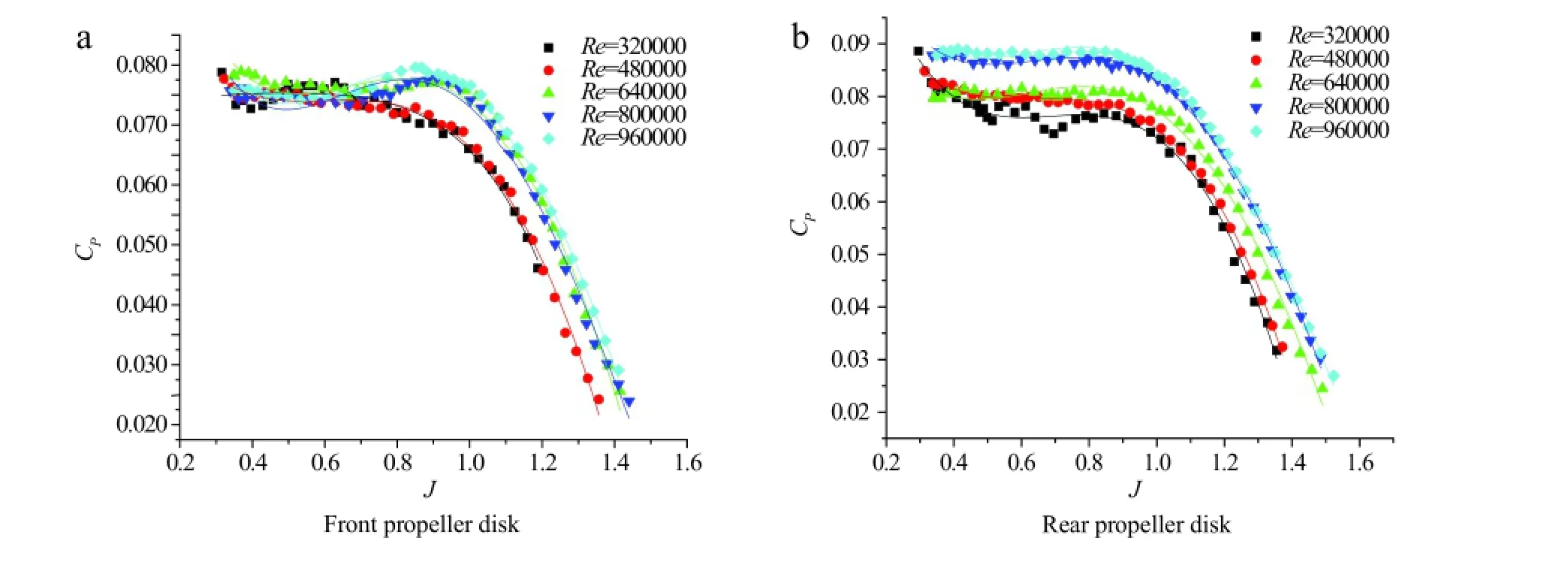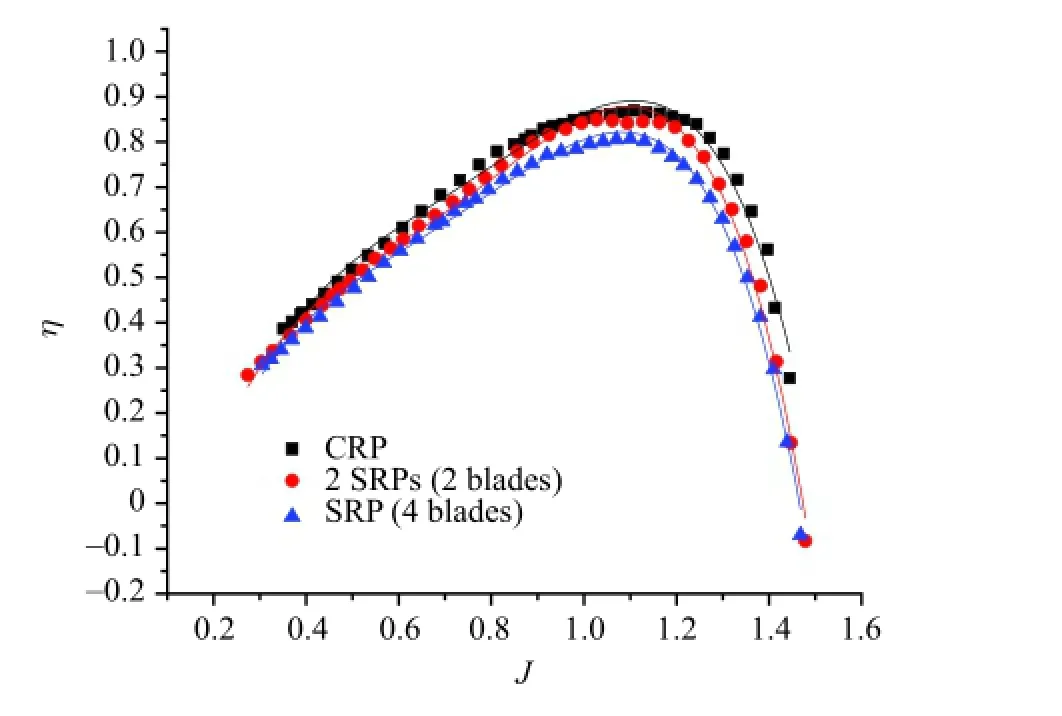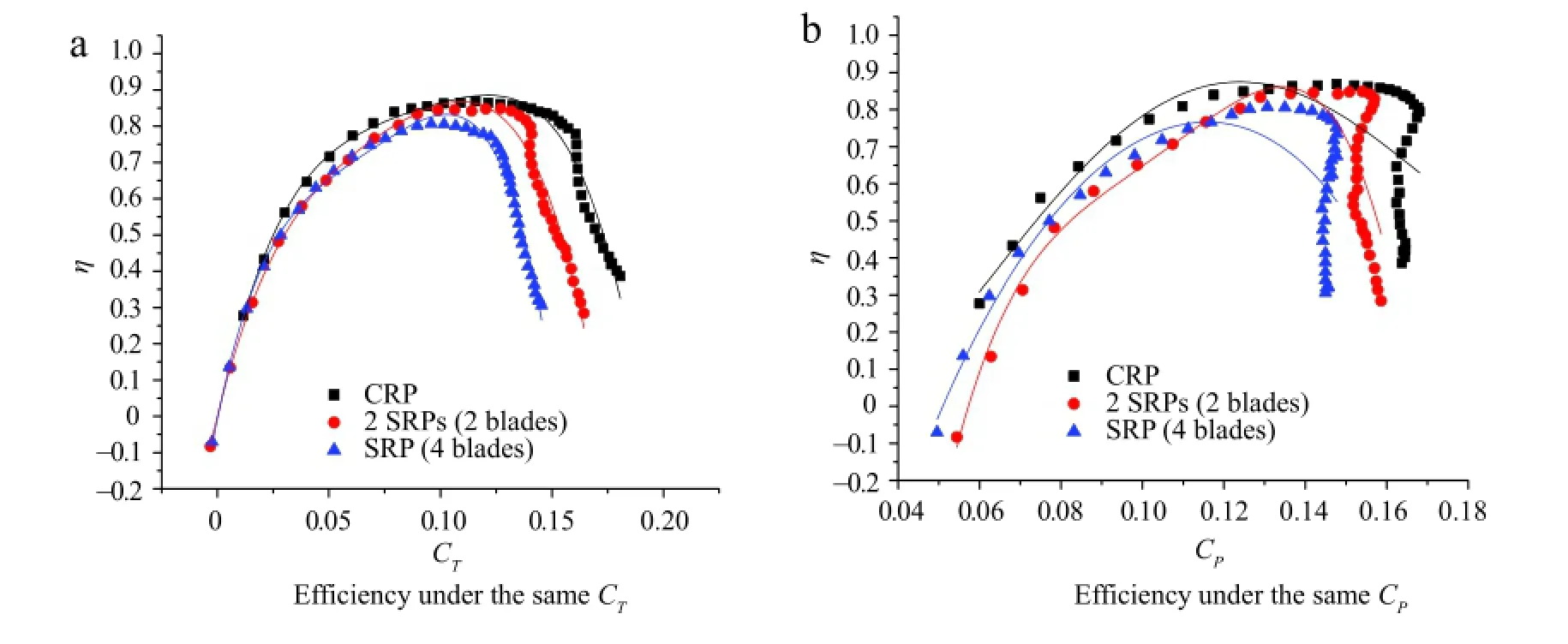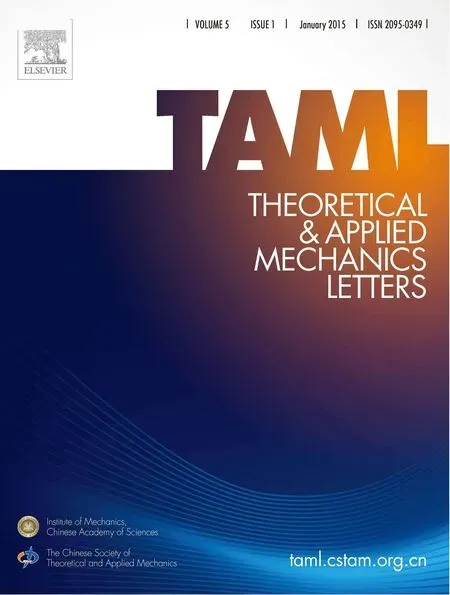Wind tunnel tests of stratospheric airship counter rotating propellers
Yaxi Chen,Peiqing Liu,Zhihao Tang,Hao Guo
Institute of Mechanics,Beihang University,Beijing,China
Wind tunnel tests of stratospheric airship counter rotating propellers
Yaxi Chen∗,Peiqing Liu,Zhihao Tang,Hao Guo
Institute of Mechanics,Beihang University,Beijing,China
A R T I C L E I N F O
Article history:
Received 3 September 2014
Accepted 29 December 2014
Available online 14 February 2015
Stratospheric airship
High-altitude propeller
Counter-rotating propellers
Configuration
Aerodynamic performance of the high-altitude propeller,especially the counter rotation effects,is experimentally studied.Influences of different configurations on a stratospheric airship,included 2-blade counter-rotating propeller(CRP),dual 2-blade single rotation propellers(SRPs)and 4-blade SRP,are also indicated.This research indicates that the effect of counter rotation can greatly improve the efficiency.It shows thatthe CRP configuration results in a higher efficiency than the dual2-blade SRPs configuration or 4-blade SRP configuration under the same advance ratio,and the CRP configuration also gains the highest efficiency whether under the situation of providing the same trust or absorbing the same power.It concludes that,for a stratospheric airship,the CRP configuration is better than the multiple SRPs configuration or a multi-blade SRP one.
©2015 The Authors.Published by Elsevier Ltd on behalf of The Chinese Society of Theoretical and Applied Mechanics.This is an open access article under the CC BY-NC-ND license(http:// creativecommons.org/licenses/by-nc-nd/4.0/).
The development of the stratospheric airship is considered to be a super puzzle in the 21st Century.Its ultra-long endurance requires a propulsion plant with high efficiency.In low-altitude flight,using propeller as a propulsion device can gain high efficiency.However,the stratospheric airship is working at very high attitude(about 20 km).There is a significance difference between the properties of air at 20 km attitude and that at the sea level. Compared with the air at the sea level,the density of the air at 20 km altitude is just 1/14 and the pressure is 1/19.On the contrary,the viscosity of the air(at 20 km altitude)is 11 times larger. Meanwhile,the stratospheric airship moves at a slow speed(10-30 m/s).The unique flight condition leads to the low Reynolds number around the flow field of the stratospheric airship propellers.Thereby the propeller designed in traditional way suffers a great loss in efficiency.
Using counter-rotating propellers(CRPs)on stratospheric airship has been proposed to improve the efficiency.Many experiment researches have shown the superiority of the CRP.In 1941,D.Biermann et al.[1]did a series of wind tunnel tests on CRPs. The research indicated that the peak efficiency of an eight-blade dual-rotating propeller was found to be from 1%to 8%higher than that for a corresponding single-rotating propeller.In the next year,another research did by D.Biermann et al.[2,3]found that dual-rotating propellers were more efficient for the takeoff and climbing conditions of flight than the single-rotating propellers, particularly for operation at high power coefficients.But all these conclusions were drawn with the propellers working at relative low altitude and general cruise speed.High-altitude propellers,especially counter-rotating propellers,have not been researched currently.This paper will discuss the effects of counter-rotation and numbers of propellers in a stratospheric environment and eventually find the optimum propeller layout form on stratospheric airships.Several configurations were taken into contrast to achieve this goal,included 2-blade CRP,dual 2-blade single rotation propellers(SRPs)and 4-blade SRP.
This experiment is conducted in the D5 wind tunnel in Institute of Fluid Mechanics of Beihang University.The sectional dimension of the D5 wind tunnel test section is 1 m×1 m and the turbulence intensity is 0.08%.Figure 1 is some photographs about the test setup.The low Reynolds numbercircumstance can be hardly achieved in underground wind tunnel.To simulate the real flight conditions,a scale-model,which the scale is 1:8,is used in the experiment.By using the scale model,the Reynolds number and Strouhal number are similar to the high attitude environment.According to the similarity principle,the diameter of propeller model is 0.75 m whereas the diameter of hub is 0.2D(D is the diameter of the propeller model).The distance between front and rear propeller disks is 0.15 m.The 2-blade SRP and 4-blade SRP are just the same except their blade number.
To concern the effects of different Reynolds number,it is taken

The rotational speed is set to 500,750,1000,1250,1500 rpm and the wind speed refers from 0 to 30 m/s.The wind tunnel tests include a 2-blade SRP,a 4-blade SRP and a 2×2(2 blades in the forward rotor and 2 in the rear)CRP.This is done to consider three kinds ofpropeller arrangement:CRP,multiple SRPs,or multi-blade SRP.The measured value has been reduced to the usual coefficient of trust,power,and efficiency.
The measured value has been reduced to the usual coefficient of trust,power,and efficiency:
propeller thrust coefficient


Fig.1.Test set-up.D5 wind tunnel.Two-blade counter-rotating propeller.

Fig.2.Thrust coefficient of front and rear propeller disk.

Fig.3.Power coefficient of front and rear propeller disk.
propeller power coefficient

propeller efficiency

Here we have
power of propeller

advance ratio

According to the similarity principle,the thrust coefficient,power coefficient and efficiency of propeller are functions of advance ratio and Reynolds number.As we can see from Figs.2-4(the points in the figures are the experimental data points and the solid lines are fit curves based on the data points),the thrust coefficient,power coefficient and efficiency of propeller are all increased with the Reynolds number.The effect becomes small as the Reynolds number rises.The curves seem to overlap when the Reynolds number is large enough.This phenomenon suggests that there comes a point,at which when the Reynolds number exceeds,the thrust coefficient,power coefficient and efficiency of propeller have no relation with Reynolds number anymore.

Fig.4.Efficiency of front and rear propeller disk.

Fig.5.Efficiency of front disk,rear disk,CRP,and 2-blade SRP.

Fig.7.Efficiency of CRP,two 2-blade SRPs,and 4-blade SRP.
Figure 5 compares the efficiency offront disk,rear disk,CRP,and 2-blade SRP.Comparing with SRP,it can be inferred that the interference between front and rear propeller disk makes the efficiency of rear propeller increase significantly.It is because of the recovery of swirl energy by the rear rotor and the partial cancellation of moments since they are in the opposite directions.Meanwhile,the counter-rotation effect leads to a slightly efficiency loss on the frontpropellerdisk.Overall,the efficiency ofthe CRP is higher than the SRP.As shown in Fig.6,the efficiency of CRPs is 3%-8%higherthan SRPs when the advance ratio is from 0.8 to 1.2,and even rises about 10%when the advance ratio is from 0.3 to 0.8.

Fig.6.Thrust,power coefficient of CRP,two 2-blade SRPs,and 4-blade SRP.
The effect of blade number can be seen from Figs.7 and 8.Increasing the blade number leads to the huge increase of propeller trust.A 4-blade SRP can provide almost twice trust than a 2-blade SRP does.However,more blade number means more energy is consumed;meanwhile,more useless power is wasted.So the efficiency of the 4-blades SRP is about 8%lower than 2-blades SRP. Although adding the number of blades may lead to the loss of efficiency,it is still an effective way to reduce the propeller diameter for its great promotion to the trust.
It can be inferred from Figs.7 and 8 that CRP can produce more trust and absorb more power than two 2-blade SRPs and 4-blade SRP at the same advance ratio,even more crucial is that the CRP is more efficient(8%higher than two 2-blade SRPs and 13%higher than 4-blade SRP).Figure 6 shows the efficiency of each configuration under the premise of producing the same trust and absorb the same power.The CRP is also considered to be the optimum configuration because of its higher efficiency in both situations.Furthermore,it can be seen from Fig.8 that when working under the condition of the optimum efficiency,CRP provides the maximum trust.To compare the two 2-blade SRPs with one 4-blade SRP,two 2-blades SRP is more efficient under the same advance ratio.But when under the situation of producing small trust(thrust coefficient less than 0.05)or expending little power(power coefficient less than 0.12),using 4-blade SRP gains higher efficiency than two 2-blade SRPs,otherwise using two 2-blade SRPs is a smarter choice. In conclusion,using CRP on stratospheric airships has the best aerodynamic performance among the three configurations.

Fig.8.Efficiency of CRP,two 2-blade SRPs,and 4-blade SRP.
A large amount of wind tunnel test data are collected and analyzed.Different configurations,included 2-blade CRP,dual 2-blade SRPs and 4-blade SRP,are compared.Then the following conclusions can be obtained.
(1)The thrust coefficient,power coefficient,and efficiency of propeller are functions of advance ratio and Reynolds number,they all increase with the Reynolds number because of the impact of viscosity.The effect is less conspicuous as Reynolds number increases.
(2)The interference between front and rear propeller disk leads to a slightly efficiency loss on the front propeller disk,but makes the efficiency of rear propeller increase significantly.For the CRP overall,the efficiency of CRPs is 3%-8%higher than SRPs when the advance ratio is from 0.8 to 1.2,and even rises about 10%when the advance ratio is from 0.3 to 0.8.
(3)Using CRP can produce more trust and more efficiency than using two 2-blade SRPs or 4-blade SRP under the same advance ratio.The CRP also gains the highest efficiency whether under the situation of providing the same trust or absorbing the same power.Therefore,using a CRP on stratospheric airship is a better configuration than using multiple SRPs or a multi-blade SRP.
[1]D.Biermann,W.H.Gray,Wind-Tunnel Tests of Eight-blade Single and Dual-Rotating Pusher Propellers in the Tractor Position.NACA ARR,1941.
[2]D.Biermann,W.H.Gray,J.D.Maynard,Wind-Tunnel Tests of Single-and Dual-Rotating Tractor Propellers of Large Blade Width,NACA WARTIME REPORTS,1942.
[3]D.Biermann,W.H.Gray,Wind-TunnelTests ofSingle-and Dual-Rotating Pusher Propellers Having from Three to Eight Blades,NACA ARR(WR L-359),1942.
∗Corresponding author.
E-mail address:chenyaxicyx@126.com(Y.Chen).
*This article belongs to the Fluid Mechanics
 Theoretical & Applied Mechanics Letters2015年1期
Theoretical & Applied Mechanics Letters2015年1期
- Theoretical & Applied Mechanics Letters的其它文章
- Adjoint-based optimization of flapping plates hinged with a trailing-edge flap
- Numerical simulation of unsteady flows over a slow-flying bat
- Propulsive performance of two-and three-dimensional flapping flexible plates
- Learning from bat:Aerodynamics of actively morphing wing
- A coupled immersed boundary-lattice Boltzmann method and its simulation for biomimetic problems
- A modified criterion for wave-induced momentary liquefaction of sandy seabed
